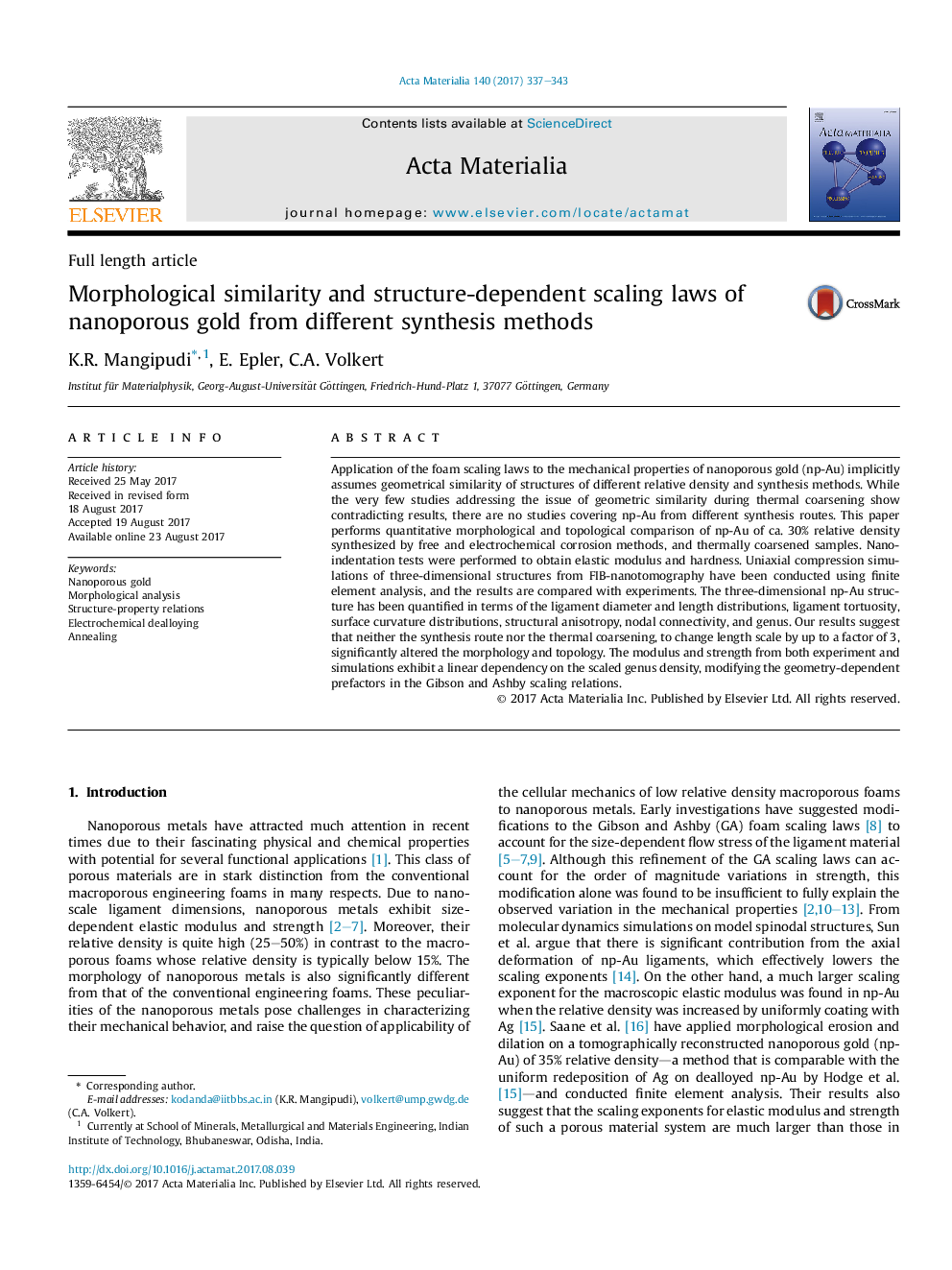| Article ID | Journal | Published Year | Pages | File Type |
|---|---|---|---|---|
| 5435781 | Acta Materialia | 2017 | 7 Pages |
Application of the foam scaling laws to the mechanical properties of nanoporous gold (np-Au) implicitly assumes geometrical similarity of structures of different relative density and synthesis methods. While the very few studies addressing the issue of geometric similarity during thermal coarsening show contradicting results, there are no studies covering np-Au from different synthesis routes. This paper performs quantitative morphological and topological comparison of np-Au of ca. 30% relative density synthesized by free and electrochemical corrosion methods, and thermally coarsened samples. Nanoindentation tests were performed to obtain elastic modulus and hardness. Uniaxial compression simulations of three-dimensional structures from FIB-nanotomography have been conducted using finite element analysis, and the results are compared with experiments. The three-dimensional np-Au structure has been quantified in terms of the ligament diameter and length distributions, ligament tortuosity, surface curvature distributions, structural anisotropy, nodal connectivity, and genus. Our results suggest that neither the synthesis route nor the thermal coarsening, to change length scale by up to a factor of 3, significantly altered the morphology and topology. The modulus and strength from both experiment and simulations exhibit a linear dependency on the scaled genus density, modifying the geometry-dependent prefactors in the Gibson and Ashby scaling relations.
Graphical abstractDownload high-res image (355KB)Download full-size image
